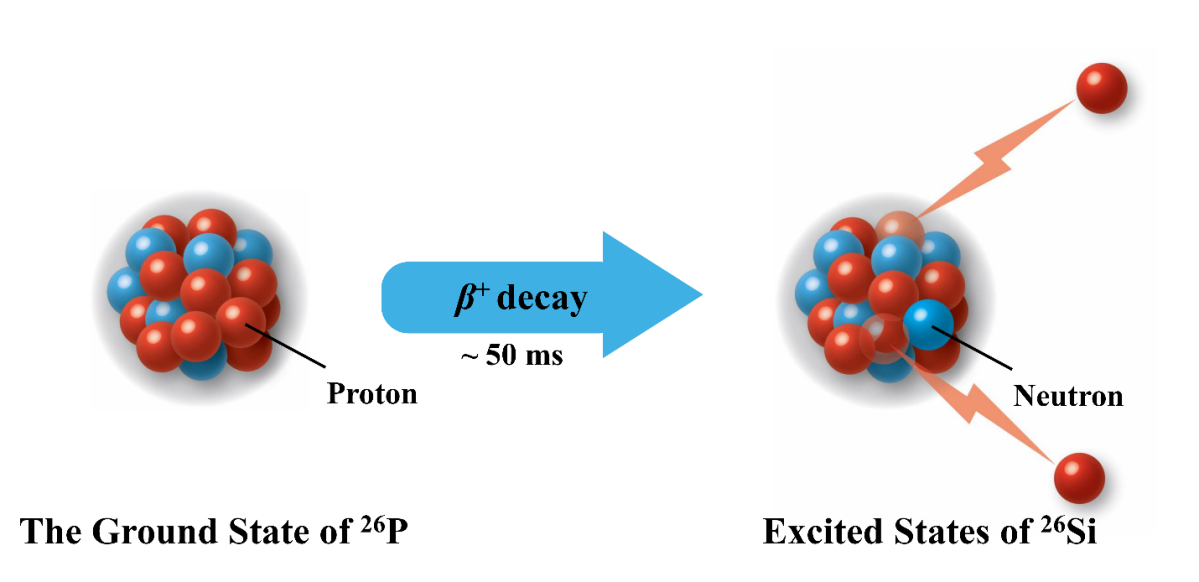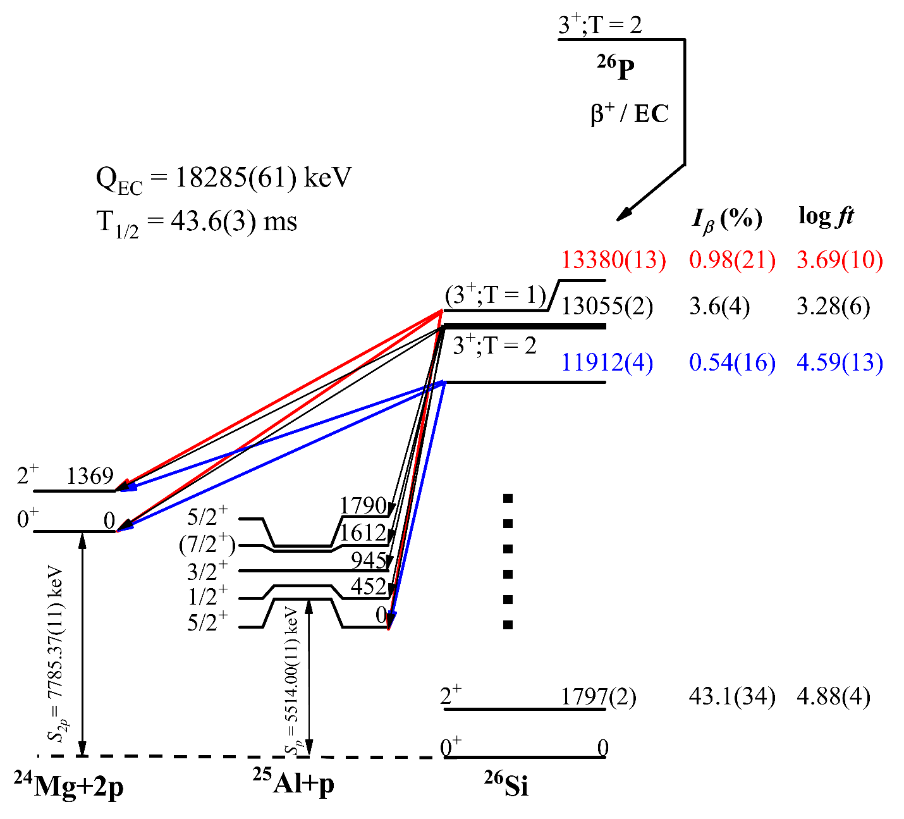Scientists Discover the Strongest Isospin Mixing in Beta Decays

Fig. 1 β-delayed two-proton decay of phosphorus-26. (Image by JIAN Hao)
Scientists from the Institute of Modern Physics (IMP) of the Chinese Academy of Sciences (CAS) and their collaborators have discovered the strongest isospin mixing ever observed in β-decay experiments, presenting a direct challenge to the understanding of nuclear force. The results were published in Physical Review Letters as an Editors’ Suggestion on Dec. 8.
In 1932, Nobel Prize winner Werner Heisenberg proposed the brilliant concept of isospin to describe the symmetry in atomic nuclei induced by the nearly identical properties between the proton and neutron. Isospin symmetry remains a generally accepted convention to date.
However, isospin symmetry is not strictly conserved due to proton-neutron mass difference, Coulomb interaction, and charge-dependent aspects of nuclear force. Such asymmetry leads to fragmentation of the allowed Fermi transition to many states via strong isospin mixing, instead of being constrained to one state in β decay.
Probing isospin mixing has gained considerable traction in scientific discovery. β decay of proton-rich nuclei plays an essential role in exploring isospin mixing. Until now, isospin mixing was observed only in several β-decay experiments and the isospin mixing matrix elements were smaller than 50 keV, which could be described by nuclear models very well.
The scientists at IMP and their collaborators provided new data on isospin mixing. They conducted a β-decay experiment on the exotic nucleus phosphorus-26 at the Radioactive Ion Beam Line in Lanzhou, which is housed at the Heave Ion Research Facility of Lanzhou.
Through high precision nuclear spectroscopy of β-delayed two-proton emission, the scientists clearly identified the isobaric analog state (IAS) at 13055 keV and two new high-lying states at 13380 keV and 11912 keV in silicon-26. They measured angular correlations of two protons emitted from silicon-26 excited states, suggesting that the two protons are emitted mainly sequentially.
Surprisingly, the scientists observed a strongly isospin-mixed doublet, the IAS and 13380-keV state in silicon-26. The large isospin mixing matrix element 130(21) keV between the two states was determined, representing the strongest mixing ever observed in β-decay experiments.
The unexpected experimental result cannot be explained very well by nuclear models. “The abnormally strong isospin mixing in this work, which may have to do with the weakly bound (or continuum) effect or nuclear deformation, presents a direct challenge to our understanding of nuclear force,” said Prof. XU Xinxing from IMP, corresponding author of this study.

Fig. 2 Partial decay scheme of phosphorus-26. (Image from Physical Review Letters)
This work is supported by the Strategic Priority Research Program of CAS, the Ministry of Science and Technology of China under National Key R&D Programs, CAS Project for Young Scientists in Basic Research, HIRFL, National Natural Science Foundation of China, Guangdong Major Project of Basic and Applied Basic Research, the Continuous Basic Scientific Research Project, and Research Grants Council of Hong Kong.
DOI: https://doi.org/10.1103/PhysRevLett.129.242502
Contact :
LIU Fang
Institute of Modern Physics
Email: fangliu@impcas.ac.cn
Contact Information
Institute of Modern Physics
Email: fangliu@impcas.ac.cn


 甘公网安备 62010202000713号
甘公网安备 62010202000713号


